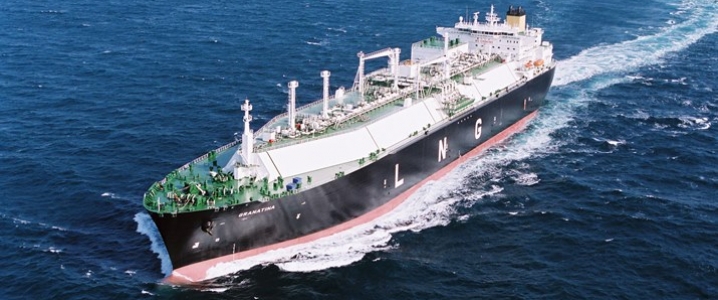A Houston-based LNG company is hoping to chart a course that hasn’t really been tried before: owning upstream natural gas assets, building the pipelines to get the gas to port, and owning the export terminal to ship the gas overseas. That part is not exactly new, but the kicker is that the company is hoping outside investors will pay a hefty portion of the bill, and in return they get an equity stake in the projects.
Tellurian Inc. is a closely watched LNG company that is gambling on a high stakes bet that could change the dynamics of gas exports. The company is trying to get investors to pay around $12 billion of the upfront cost to build the Driftwood LNG export terminal in Louisiana. Footing that bill will grant them equity stakes as well as the ability to purchase the upstream gas without a markup.
The plan has the advantage of not needing to take on debt, offloading some of the risk onto other companies. But the trick will be inking those deals. So far, Tellurian has not been able to secure major equity partners, although Total SA has pumped $207 million into the company, with smaller investments from others.
“This cleverly removes the banks from the whole formula, and then it becomes the buyer’s problem,” Jason Feer, head of business intelligence at Poten & Partners Inc., told Bloomberg. “The fact that you don’t have a whole bunch of people falling over themselves to sign is an indicator of how complicated it is.” The lack of progress has taken a toll on the company’s share price, which is down by about a third since the end of 2017.
But while Tellurian is engaging in a risky business plan, the company argues that the evolving nature of the LNG market necessitates a different approach. The global market for LNG is growing quickly, with more suppliers, more buyers and a lot more liquidity. That means that the old practice of signing fixed long-term contracts is eroding. Buyers no longer feel compelled to lock themselves into such deals, and the growing spot market is undercutting the ability of sellers to demand these rigid long-term contracts.
The problem is, without those long-term deals, LNG developers can’t go to a bank and secure financing for a multi-billion-dollar project. That’s where Tellurian’s idea of bringing on outside investors comes in. Related: The Biggest Hurdle To China’s Yuan-Priced Crude Benchmark
The company is also hoping to spend around $2 billion to purchase upstream assets in the Haynesville Shale from Chesapeake Energy, which would be strategically located close to the export terminal. A few billion dollars more would go to the pipelines to carry the gas to the coast. Tellurian is also looking at gas from the Permian, which is soaring as E&Ps aggressively drill for oil.
All told, Tellurian is planning on spending upwards of $24 billion, but will need to convince a series of other companies to help foot the bill. The setup would give Tellurian a sort of vertical integration for gas production, transport and export, which it says will bolster profit margins. “You need to be integrated, you need to be able to add a source of associated gas that the producer of oil doesn’t need, or be able to produce gas yourself at a very competitive price,” Charif Souki, Tellurian’s chairman, told Bloomberg.
Meg Gentle, Tellurian’s CEO, told Bloomberg that the company could theoretically send gas abroad at a cost of $3/MMBtu, which would include the cost of moving it to the coast and liquefying it. That compares favorably to the $3.15-$6.15/MMBtu that LNG cost at Cheniere Energy’s Sabine Pass in January, according to DOE data.
For now, Tellurian still needs to ink deals with other investors before it can move forward with a final investment decision and begin construction. The company says it hopes to do so in 2019, which would put the Driftwood LNG export terminal on track to come online in 2023.
The one thing working in the company’s favor is that the LNG market is starting to look tighter than most analysts thought it would at this point. Not too long ago, everyone was predicting the supply glut would persist well into the 2020s. But China’s skyrocketing level of LNG imports, along with smaller unexpected increases from a long list of other countries, has rapidly soaked up some of that excess supply. Now, some are worried that the market could suffer from the opposite problem: too little supply, perhaps in the early to mid-2020s. Related: New Sanctions On Russia Could Lift Oil Prices Further
The situation is not unlike that of the oil market, in which several years of a market downturn led to a severe cutback in investment, which is sowing the seeds of a supply crunch several years down the road.
Already, LNG prices have rebounded in Asia, in large part because of China’s strong demand. The price for the Platts JKM Marker – tracking LNG prices in East Asia – is expected to be up more than 40 percent this year. China’s LNG imports are expected to rise by a quarter in 2018, after a record high in 2017.
If the tighter market outlook boosts confidence in potential investors, Tellurian could yet secure the deals it needs to move forward.
By Nick Cunningham of Oilprice.com
More Top Reads From Oilprice.com:
- Oil Markets: The Calm Before The Storm
- The Bullish And Bearish Case For Oil
- JP Morgan: Oil Prices Won't Go Higher Than $70

















